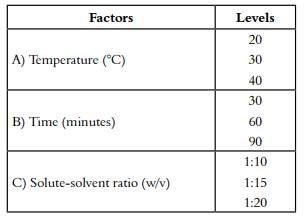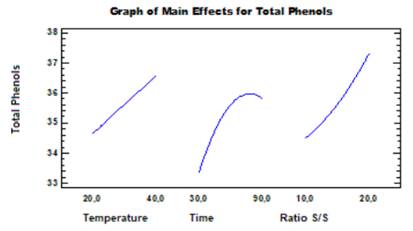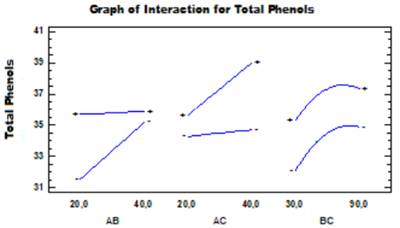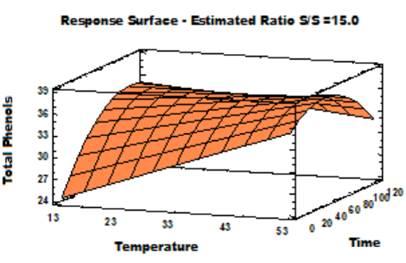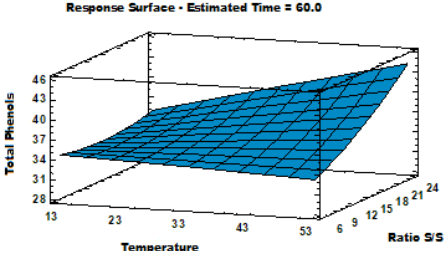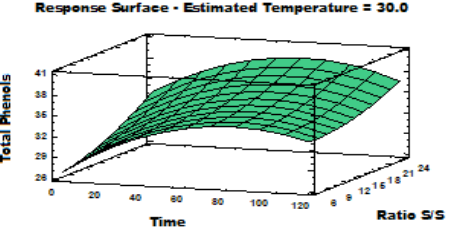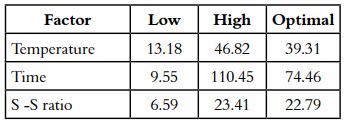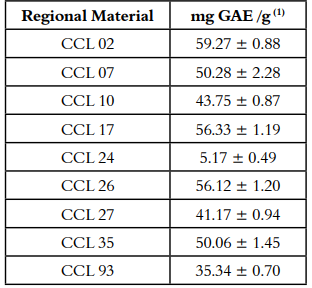INTRODUCTION
Many research studies about the properties of polyphenols, mainly their antioxidant capacity, have been significantly addressed in recent decades. The positive health effects of these compounds is of great interest in the science and technology food, mainly in the finding and using natural sources of antioxidant compounds, especially natural products and foods. (1, 2).
Among the foods in which a significant percentage of polyphenols have been reported is the Cocoa (Theobroma cacao L.). This food is particularly rich in polyphenols, representing between 12 and 18% of the beans’ dry weight. These compounds are strongly associated with antioxidant activity and with the organoleptic characteristics of the products made from cocoa. (3). The EFSA (European Food Safety Authority) recognized to chocolate and cocoa powder as an important source of polyphenols with outstanding properties for health (4, 5).
Proanthocyanins, catechins, or flavan-3-ols and anthocyanins are the major flavonoids in cocoa beans, with 58, 37, and 4 percent (%) in content, respectively. (3,4). The content and composition of polyphenols in cocoa beans dependent on many factors such as genotype, origin, type of clone, growth conditions, fermentation, drying, and roasting process. (4, 6-7).
Various extraction methods have been reported for polyphenol extraction compounds, including heat reflux extraction, Soxhlet extraction, traditional maceration, microwave-assisted extraction, ultrasound-assisted extraction, and supercritical fluids extraction (8-9). In addition to the extraction methods, many factors in the extraction processs involve time and temperature of extraction, solvents type, mixture solvents, pH, solute-solvent ratio, and particle size (9-11). The extraction of polyphenols from cocoa beans cover a wide range of variation for each of these factors. For example, various extraction methods like the maceration with solvents to ultrasound-assisted extraction (3, 12), extraction times (13, 14), diverse solutesolvent ratios (1:10-1:30 (w/v)) (15, 16). As well as different extraction temperatures: 20 - 37 ° C (13, 17) and various extraction solvents and mixtures solvents such as ethanol-water (80:20), methanolwater (70:30), methanol (100%) isopropanol-water (60:40) and acetone: water: acetic acid 70:29.5:0.5 (3, 14, 17-19) v/v.
The use of ultrasonic radiation (20-100 kHz) to extract natural compounds provides high reproducibility, easy handling, low use of solvents, energy consumption and, temperature, as well as minimizes the losses of bioactive compounds (20). Gil (2012) found that with polyphenols from cocoa, in general, the Ultrasound-Assisted Extraction is more efficient than the conventional extraction by agitation. Quiroz-Reyes et al. (2012), determined that the total polyphenol content of cocoa cotyledon is statistically higher when using the ultrasound method than the maceration with solvents. The extraction time is a fundamental factor because studies have generally found that, as the extraction time increases, the quantity of polyphenols extracted increases as well (14, 21). Temperature is an important factor to be taken into account due to its impact on the solubility of the solutes in the solvent and the degradation of thermolabile compounds. Likewise, the solute-solvent ratio is important because it modifies the solubility and the maximum amount of total extractable polyphenols (22). Since there is no universal method for the extraction of polyphenols in cocoa beans, it is important to study the influence of these factors on the degree of extraction of said compounds. The main objective of this study was to obtain the highest contents of polyphenols, optimizing the ultrasound-assisted extraction conditions for Colombian cocoa beans from the Pacific Coast in the Nariño region.
MATERIALS AND METHODS
Materials
Methanol, acetone, isopropanol, ethanol, acetic acid, and the Folin-Ciocalteu reagent were purchased from Merck (Germany); Gallic acid was obtained from Sigma-Aldrich (USA).
For all experiments, the cocoa samples were collected from regional materials of Consejo Comunitario El Rescate- las Varas from Tumaco, Nariño-Colombia.
EXPERIMENTS
Extraction solvent selection
Experiments were carried out using an unrestricted completely random design (CRD) with two replicates, for a total of 15 tests. Factors such as temperature, time extraction, and solute-solvent ratio were kept constant (room temperature at 20°C, 90 minutes, and 20 mL of solvent/gram of sample). The five solvents used were: methanol, methanol:water (70:30 v/v), isopropanol-water (60:40 v/v), ethanol:water (80:20 v/v) and acetone: water: acetic acid (70:29.5:0.5 v/v). Statistical significance was examined with analysis of variance (ANOVA) and Tukey test at 95% confidence.
Optimization Ultrasound-assisted extraction
After determining the solvent that extracts the highest amount of polyphenols, we proceeded to optimize the extraction factors: temperature, time, and solute/solvent ratio, through the central composite design (CCD) 22 plus stars point and two central points. The number of experiments was 16 plus one replica for a total of 32 experiments. The total polyphenols content was considered the response variable. The interaction variables and experimental data were analyzed using an analysis of variance (ANOVA) and response surface methodology. The data analysis was performed with the Statgraphics Centurion XVI software. Table 1 shows a description of the levels of each of these factors.
Cocoa bean extracts were prepared with Brandson ultrasound equipment (USA) with a control temperature selector and operated at a standard frequency. The extract was stored at -20 °C in amber vials until further analysis.
Folin-Ciocalteu Method for Total Polyphenols
The total polyphenol content of the extracts was determined using the Folin-Ciocalteu method, described by Singleton (1965), with some modifications proposed by Wollgast (2004). Briefly, 80 μL of extract and 1,250 μL of Folin reagent diluted ten times were mixed in a shaker and then 2,000 μL of sodium carbonate (7.5%) was added. The vials were left for 60 minutes at room temperature in the dark. The absorbance was determined at 765 nm in a UV-Visible spectrophotometer Genesys 10S Thermo Scientific (USA). All of the samples were analyzed in duplicate. The quantitative analysis was performed with a standard external method using calibration curves with gallic acid. (50 -300 μg/mL) and were expressed as mg of gallic acid equivalent/g per sample.
RESULTS
Extract solvent selection
The A NOVA results of the first stage experiment showed significant differences between conditions of experimentation (the type of solvent) at a level of significance of 95%, as shown in Table 2. The averages of the Tukey’s significance test showed four differentiated groups. The experiments that employed a solvent mixture of acetone: water: acetic acid (70: 29.5: 0.5) was statistically superior compared to the other types of solvents (Table No. 3). This solvent mixture was chosen to carry out the extraction of the polyphenols in the samples.
Optimization Ultrasound-assisted extraction
The ANOVA of the CCD indicates six effects that influenced the response variable, which refers to the main effects of the three factors studied and three interactions. The solute-solvent ratio (C) was the most important parameter affecting the total polyphenols content. Likewise, time (B) and temperature (A) of extraction and the interaction temperature: time (AB), temperature: solute solvent ratio (AC), and quadratic effect of time (BB) showed a significant influence (Figure 1. Pareto chart). Table 4 shows the results of statistical analysis. The main effects plot (Figure 2) illustrates the behavior of the response variable (polyphenols totals) related to the levels of the factors analyzed. The interaction plot shows the relationship among factors analyzed in this work: temperature: time (AB), temperature: S-S ratio (AC), and time: S-S ratio (BC). (Figure 3).
Table 4 Analysis of variance for Central Composite Design of extraction of the Polyphenols compound.
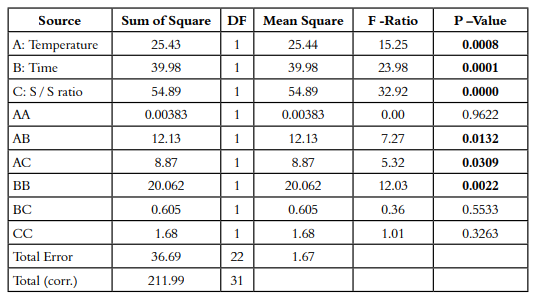
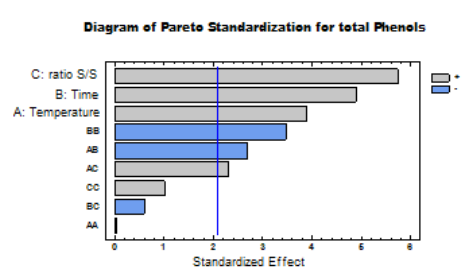
Figure 1 Pareto chart for ultrasound-assisted extraction of polyphenols in cocoa beans. A: Temperature, B: Time, C: S-S ratio.
The optimal values that maximized the response variable were determined through the optimization of central composite design. The results are shown in Table 5. The optimal response (maximum predicted response) predicted with the optimal factors extracts was 40.3 mg gallic acid equivalent/g cocoa.
Total Polyphenols Quantification in Cocoa samples by Folin-Ciocalteu Method
The analysis of total Polyphenols in cocoa beans samples of regionals materials from Tumaco Colombia was performed with the optimization conditions described above. Table 6 shows the results of these samples.
DISCUSSION
The results of the extraction solvent selection are congruent with the reported by Wollgast et al. (2004), in his study regarding the determination of polyphenols, Wollgast analyzed several solvents, finding that the most suitable mixture was acetone: water: acetic acid (70: 29.5: 0.5) v/v, which was used for the CCD optimization. The solubility of polyphenolic compounds in cocoa beans is affected by the solvent polarity; these compounds are poorly soluble when using pure solvents (methanol), as evidenced in the results shown in table 3. Zlotec et al. (2015) determined that the most proper solvent system for polyphenols in basil leaves extracts (Ocimum basilicum L.) (frozen matrices) was acetone: water: acetic acid (70: 29.5: 0.5) v/v. The solvent mixtures acetone-water increases the solubility of phenolic compounds due to its high polarity (23).
The main effects plot shows a variation directly proportional between the studied levels of the factors: solute-solvent ratio and temperature regarding the response variable. When the solutesolvent ratio was increased (1:10 to 1:20) and the extraction temperature (20 to 40 °C), the value of the response variable total polyphenols also presented this behavior. However, for the time extraction factor, a progressive increase was observed and later a decrease in the response variable, which indicates that at this inflection point, the optimum point was reached for the time extraction factor. Gil et al. (2012) evaluated the extraction time using ultrasound to determine polyphenols, reaching up to 60 minutes without finding the inflection point. In this work, the methodology was set to evaluate up to 90 minutes, which found an inflection or optimal point for the time factor at approximately 75 minutes. The inflection point for the extraction time is explained for the cavitation phenomenon, which occurs for prolonged sonication times. This phenomenon can be the cause of degradation that polyphenol compounds in the extraction (24).
Roso and Toro (2011) in their work about the optimization in polyphenols extraction from Hilacha Mango kernel (Mangifera indica Var), which indicated an increase in the phenols content due to the increment in the extraction temperature, generated the rise in these compounds solubility in the solvent. Another hand, the heating in the extraction can soften vegetable tissues, weaken the cell wall advantage release of phenolic compounds (22).
The Solute-solvent ratio was the most important parameter influencing the total polyphenols content. The optimal value was 22.97 mL of solvents. The S-S ratio had a positive effect on the extraction yield. The higher extraction of polyphenols when the S-S ratio increased is mainly due to mass transfer principles. Some authors, as Radojkovi et al. (2012) explained that the driving force during mass transfer is the concentration gradient between the solid and the bulk of the liquid, which is greater when a higher solvent to solid ratio is used (25-26). Some research has determined that yield in the extraction of polyphenols compounds from diverse materials depends on properties and structure of the compound, degree of polymerization, and its relation to the polarity of the solvent used in the extraction. (27-28).
The interaction plot showed that the temperature/ time relationship had a greater effect with a lower value than the studied time, which was consistent with the effect of the response decreasing with a higher time frame (see Figure 2). For the temperature/solute-solvent ratio interaction, an opposite effect was observed since the solute:solvent ratio gave the most pronounced effect. For the time/solute-solvent interaction, a similar effect was observed for both the minor and the higher temperatures. This interaction showed an inflection point coincident with the main effect of the time extraction.
Total Polyphenols Quantification in Cocoa samples by Folin-Ciocalteu Method
Regional material from Tumaco-Colombia CCL-02 had the highest content of polyphenols (59.27 mg GAE/g). Zapata et al. (3) reported values of total phenols in a range of 21.69 to 38.64 mg GAE/g of cocoa beans without ferment. The content of total polyphenols in unfermented and dried cocoa beans from different countries is variable. Ivory Coast in cocoa beans samples of Forastero variety reports a value of 81.5 mg GAE/g. Perú in the beans of criollo variety 0.5 mg GAE/g; Venezuela Trinitario variety 64.3 mg GAE/g, Colombia Amazon variety 81.4 ± 3.7 mg GAE/g (29). Colombia, CCN-51 Clone from Santander region, the value was 73.48±4.93 mg GAE/g (6). The content and composition of polyphenols in cocoa beans depend on many factors such as genotype, origin, type of clone, and growth conditions.
CONCLUSIONS
The solvent mixture of acetone: water: acetic acid (70:29.5:0.5) was found as the solvent system that presented the highest yield in polyphenols extractions from cocoa samples according to the statistical analysis. The results obtained from the design of experiments of the CCD confirmed that all the factors considered had a significant influence on the amount of total polyphenols extracted. According to the optimization with CCD, the conditions that maximize the extraction method of polyphenols using ultrasound-assisted extraction were: temperature of 39.3ºC, solvent-solute ratio 1g/22.8 mL, and time of 74.5 min. The optimal response of total polyphenol value is 40.33 mg gallic equivalent acid/g of cocoa beans.













